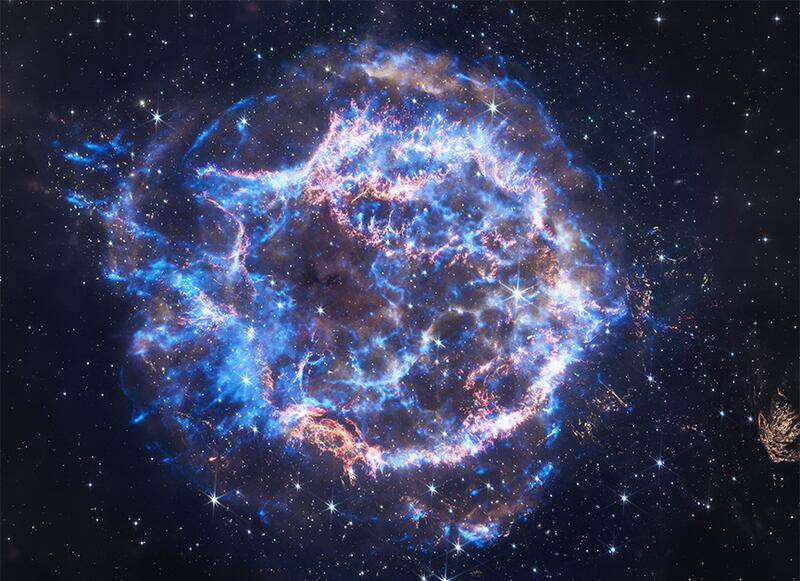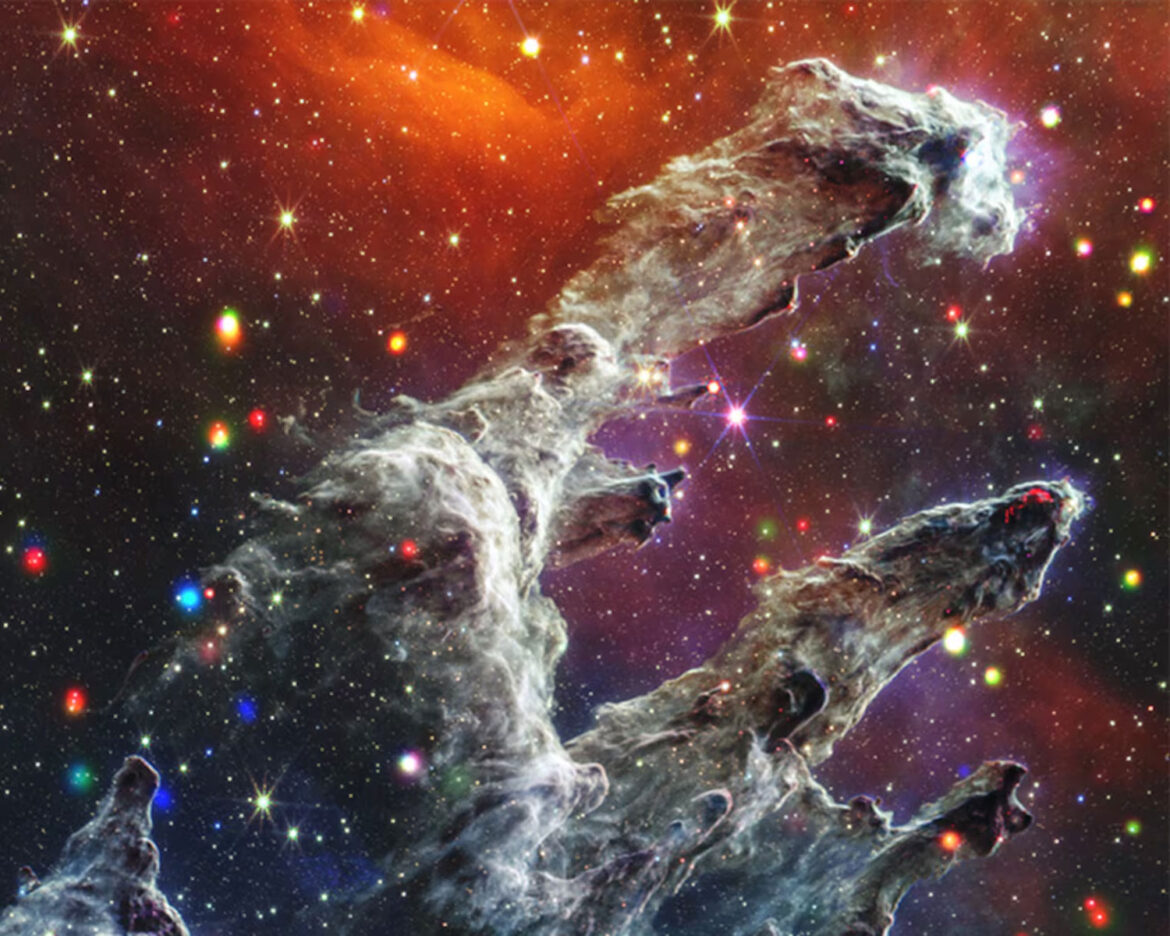NASA has unveiled five breathtaking images, each offering an unprecedented look into the vast and intricate beauty of the universe. From the fiery surface of the Sun to distant galaxies and nebulae, these newly released visuals provide fresh insights into the dynamic structures formed by gas, dust, and stars.

Among the most striking is a composite image of the Sun, captured using three specialized telescopes—NuSTAR, the X-ray Telescope (XRT), and the Atmospheric Imaging Assembly (AIA). This multi-wavelength approach reveals the Sun’s high-energy X-ray activity, showcasing the solar surface in extraordinary detail. The image highlights the complexity of solar dynamics, with NASA experts noting how each wavelength exposes different aspects of the Sun’s activity.
Another image features the Orion Nebula, a vast stellar nursery located 1,344 light-years from Earth. Captured in infrared light, the image displays two massive cavities carved out by stars that emit light millions of times more powerful than the Sun. In the image, warm dust glows blue, while cooler dust appears green, creating an ethereal view of this cosmic wonder.

NASA also reimagined the iconic Eagle Nebula in its collection, with the “Pillars of Creation” captured by the Wide Field Survey Explorer (WISE). This image, showing a region about 5,700 light-years away, presents dusty clouds surrounding the pillars in faint yellow and green hues, where star formation is still actively taking place.
Another highlight is the Andromeda Galaxy, the closest spiral galaxy to the Milky Way. Data from the ESA’s Herschel mission and retired NASA instruments reveal intricate patterns of dust clouds in the galaxy. The image showcases hydrogen gas in red and cold dust in green, providing an unparalleled look at one of the most studied galaxies in the universe.
Lastly, the Godzilla Nebula offers a vibrant image of gas and dust clouds about 7,800 light-years from Earth. Captured by the Spitzer Space Telescope, the nebula resembles the famous creature Godzilla. The red regions represent warm dust heated by stars, while hydrocarbons in the nebula glow green, adding to the vividness of the cosmic scene.
These images are not only visually stunning but also serve as essential tools for scientists aiming to understand the life cycles of stars and the intricate physics behind galactic formations.
NASA’s latest collection continues to push the boundaries of our understanding of the cosmos, providing both researchers and space enthusiasts with awe-inspiring views of the universe.




